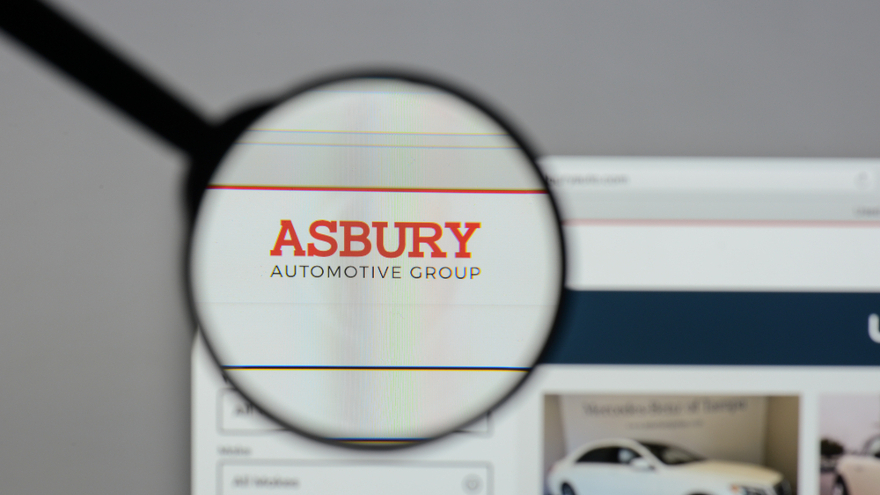Asbury to focus on what it can control, plus investing in web, mobile tech

Editorial credit: Casimiro PT / Shutterstock.com
Asbury Automotive Group will spend the rest of the year focusing on parts of its business it can control and expects to invest in excess of $10 million on its omni-channel strategy, company executives said.
“Our plan for the remainder of 2018 is to focus on the aspects of the business that we can control, specifically, parts and service, used cars, (finance and insurance), and overall expense management, while continuing to intelligently deploy capital towards the highest return,” said Asbury Automotive chief executive David Hult, during the company’s quarterly conference call last week.
“Be that strategic investments in our existing business, notably our omni-channel capabilities, acquisitions or returning capital to shareholders.”
Though it has been widely predicted that new-vehicle sales will flatten in 2018 Hult “doesn’t see a significant downturn coming” but expects the seasonally adjusted annualized selling rate to be “choppy or bumpy” throughout the year.
He also noted that the company’s average gross profit per import new unit was negatively impacted by declines in sales at its Nissan dealerships resulting in lower incentive money. The Nissan brand started 2018 “with a lot of ’17 product on the ground,” he added.
Same-store average gross profit per new vehicle for Asbury’s import brands plunged 24 percent to $799. The average gross profit per new unit for its luxury brands rose 5 percent to $3,713; its domestic brands were up 5 percent to $1,801.
Nissan represents 11 percent of the dealership group’s brand mix, according to documents released in conjunction with the conference call.
Omni-channel strategy
Asbury is using its omni-channel strategy to position itself for the future by investing in its web and mobile technology and assembling a special team to manage all digital traffic, said John Hartman, the company’s senior vice president, operations, who was also on the call.
The team supports 25 percent of the group’s stores and is expected to support the entire company within 18 months, Hartman said.
“Stores participating in the program are experiencing a 20 percent increase in conversion rates coupled with enhanced sales efficiency,” he added.
Asbury is also applying its omni-channel capabilities to other aspects of its business.
For example, up to 7 percent of its vehicles sales starts through PUSHSTART, it’s online sales tool that enables customers to purchase vehicles online, get financing approvals and have their vehicle delivered to their driveway.
“We are extremely excited about these initiatives and proud that we’ve been able to maintain our industry-leading SG&A management while investing in the future,” Hartman said.
New accounting standard
On Jan. 1, Asbury adopted a new revenue recognition accounting standard which reduced its net income by $900,000 and earnings per share by 4 cents the company said in an April 24 document detailing the company’s first quarter earnings.
The company’s net income in the quarter increased 18 percent to $40.1 million on revenue that rose 4 percent to $1.61 billion. Net income in the first quarter of 2017 was adjusted for a $900,000 pre-tax gain on legal settlements.
Asbury’s overall sales of new cars and trucks in the quarter were up 1 percent to 23,659 units and overall used-unit sales increased 3 percent to 20,570.
Same-store sales of new vehicles slid 2 percent to 22,965; same-store used-unit sales were up 1 percent to 20,000 units.
Hartman said used-vehicle enterprise software the company implemented in all dealerships in the fourth quarter of 2017 was bearing fruit: the first quarter of 2018 marked the first time the company experienced an uptick in used-unit sales since the second quarter of 2017.
Same-store parts & service
On a same-store basis, warranty work in parts and service declined 8 percent but the company’s parts and service revenue and its gross profit each grew 3 percent.
That’s thanks to a 5-percent increase in customer pay work and improved used-vehicle sales helped Asbury increase its reconditioning segment within parts and service by 4 percent.
To accommodate that uptick in customer pay work, the dealership group is trying to increase its technician head count, which is not easy, Hult said. He said the company has had empty service bays at its dealerships for “years.”
“If we filled every bay we had and didn’t invest $1 in brick and mortar, (service and parts business) would be up in excess of 30 percent,” he added.
Asbury acquired a Honda store in Indiana in the quarter and will close on the acquisition Chevrolet and Toyota stores the Atlanta market in the second quarter, Hult said.
The Indiana store is Asbury’s second dealership in that market and is expected to generate $120 million in annual revenue, Hult said. He called Indiana an “attractive market opportunity.”
Conversely, he described the stores in Atlanta as “under-performing,” but notes they have potential and are predicted to generate a combined $120 million in annual revenue.

 View The Latest Edition
View The Latest Edition

